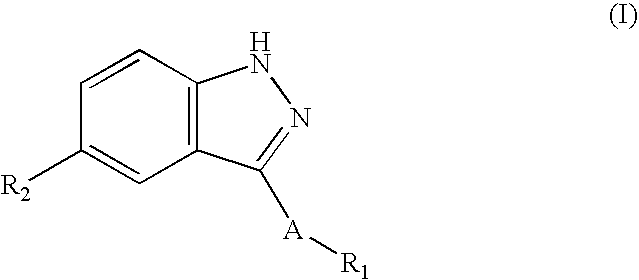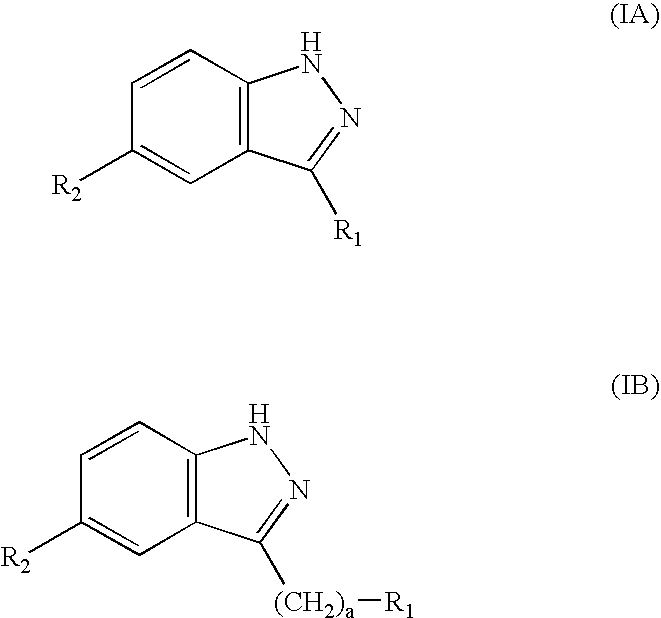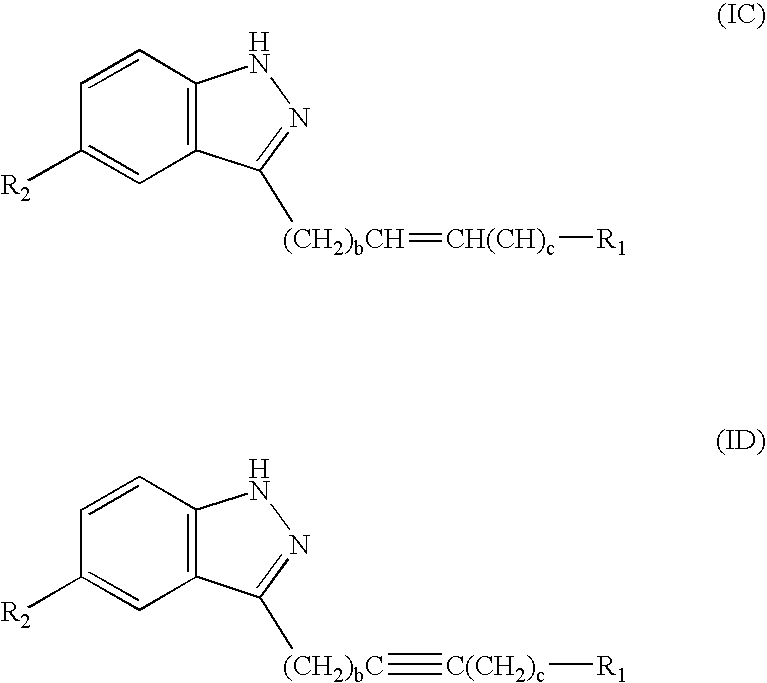Methods for preserving tissue
a tissue and tissue technology, applied in the field of tissue preservation, can solve the problems of tissue injury, sudden and extreme changes in the physicochemical environment, blood flow and oxygen distribution, etc., and achieve the effect of convenient formation
- Summary
- Abstract
- Description
- Claims
- Application Information
AI Technical Summary
Benefits of technology
Problems solved by technology
Method used
Image
Examples
Embodiment Construction
[0084] 4.1 JNK Inhibitors
[0085] Illustrative JNK Inhibitors are set forth below.
[0086] In one embodiment, the JNK Inhibitor has the following structure (I): [0087] including stereoisomers, clathrates, solvates, prodrugs, polymorphs or pharmaceutically acceptable salts thereof, [0088] wherein: [0089] A is a direct bond, —(CH2)a—, —(CH2)bCH═CH(CH2)c—, or —(CH2)bC≡C(CH2)c—; [0090] R1 is aryl, heteroaryl or heterocycle fused to phenyl, each being optionally substituted with one to four substituents independently selected from R3; [0091] R2 is —R3, —R4, —(CH2)bC(═O)R5, —(CH2)bC(═O)OR5, —(CH2)bC(═O)NR5R6, —(CH2)bC(═O)NR5(CH2)cC(═O)R6, —(CH2)bNR5C(═O)R6, —(CH2)bNR5C(═O)NR6R7, —(CH2)bNR5R6, —(CH2)bOR5, —(CH2)bSOdR5 or —(CH2)bSO2NR5R6; [0092] a is 1, 2, 3, 4, 5 or 6; [0093] b and c are the same or different and at each occurrence independently selected from 0, 1, 2, 3 or 4; [0094] d is at each occurrence 0, 1 or 2; [0095] R3 is at each occurrence independently halogen, hydroxy, carboxy, a...
PUM
| Property | Measurement | Unit |
|---|---|---|
| molecular weight | aaaaa | aaaaa |
| weight percent | aaaaa | aaaaa |
| weight percent | aaaaa | aaaaa |
Abstract
Description
Claims
Application Information
 Login to View More
Login to View More - R&D
- Intellectual Property
- Life Sciences
- Materials
- Tech Scout
- Unparalleled Data Quality
- Higher Quality Content
- 60% Fewer Hallucinations
Browse by: Latest US Patents, China's latest patents, Technical Efficacy Thesaurus, Application Domain, Technology Topic, Popular Technical Reports.
© 2025 PatSnap. All rights reserved.Legal|Privacy policy|Modern Slavery Act Transparency Statement|Sitemap|About US| Contact US: help@patsnap.com



